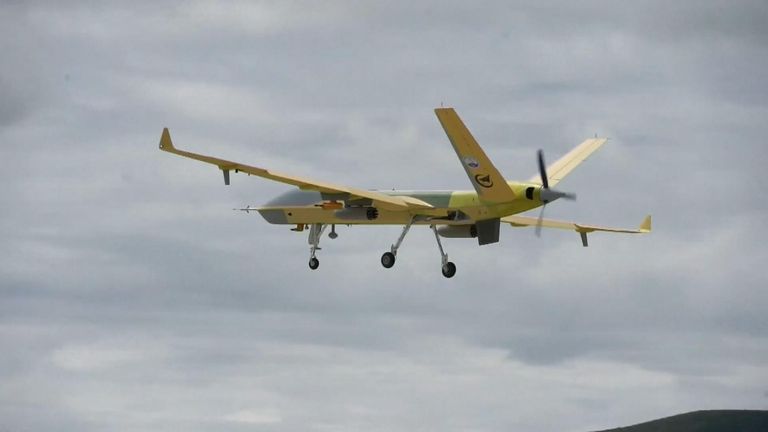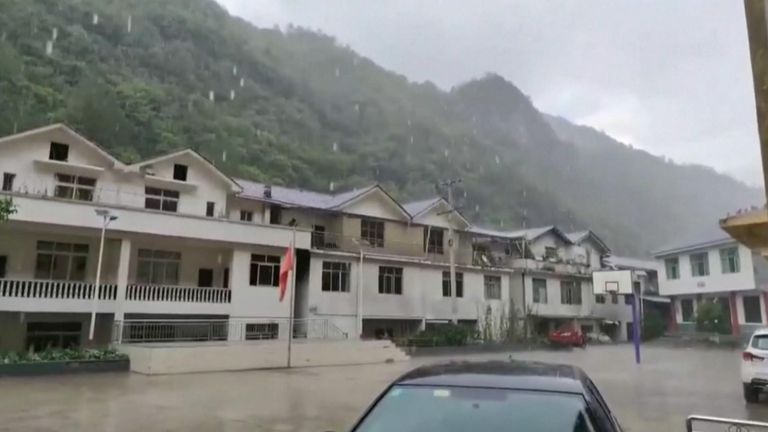Drones and rockets have been deployed in China to make clouds produce rainfall during a record-breaking heatwave and severe drought.
The devices have been sowing silver iodide, which has a similar structure to ice, into clouds.
Water droplets cluster around the particles, modifying the structure of the clouds and increasing the chance of rainfall.
The practice, known as cloud seeding, has been carried out during China’s hottest and driest summer since the country began keeping temperature and rainfall records in 1961.
Temperatures have exceeded 40C (104F) for the past week and longer.
Huang Haojuan, deputy director of the weather modification office of Guizhou in southwest China, said on Thursday that plans were in place for eight flights to cover the entire province.
“Typhoon Ma-on has brought to Guizhou precipitation conditions, and we have made both ground and air preparations so our aircraft will carry out frequent operations on Thursday and Friday to increase the rainfall as much as possible,” he said.
Drones were dispatched over the Sichuan province in southwest China to bring rainfall to more than 600 sq/km (232 sq/miles) of land.
Local authorities used rockets to bring rainfall to 20 counties and districts in the Chongqing municipality of southwest China on Thursday.
In the municipality’s Tongan District, 15 rockets were fired six times to bring the long-anticipated rain.
Wang Jidong, deputy chief of the local meteorological bureau, said: “Right now we are rather sufficient in our artificial-influence rockets supply.
“We have strengthened monitoring of the weather and carried out artificial precipitation operations accordingly to further relieve the drought and high temperature in the area.”
A drone arrived in Henan in central China, one of the country’s granary provinces, on Thursday to bring artificial precipitation to the area.
Li Xingyu, a researcher from the Institute of Atmospheric Physics under the Chinese Academy of Sciences, said: “The good thing about aircraft precipitation is that it can influence a wide range of area, it’s quite quick (in catalysts-spreading), and can work directly on the clouds, showing higher efficiency.
“This will yield better results compared to the traditional ways when working on wide-ranged cloud sheets.”
Read more from Sky News:
Receding Yangtze in China reveals three Buddhist statues
Pakistan calls for aid after months of flooding cause ‘humanitarian disaster’
Russia ‘burning off gas’ as Europe grapples with energy crisis
The record heatwave in China is now beginning to subside, with farmers across the country assessing the damage caused by a prolonged drought.
More than 70 days of extreme temperatures and low rainfall have wreaked havoc along the basin of the Yangtze river, which supports more than 450 million people as well as a third of the country’s crops.
The severe heatwave has prompted mountain fires, wilted crops and dried up hydro systems.


